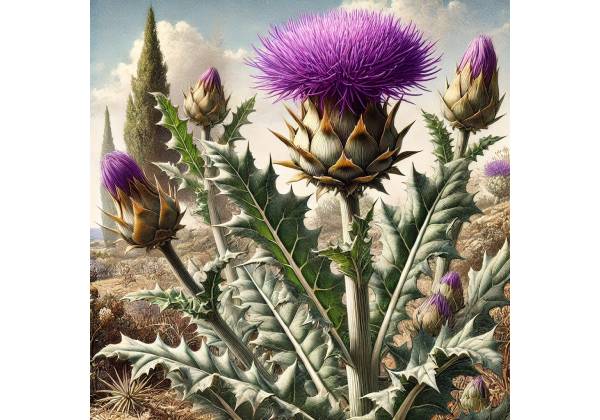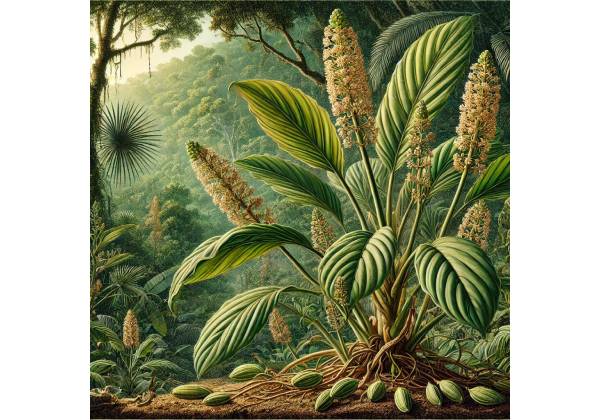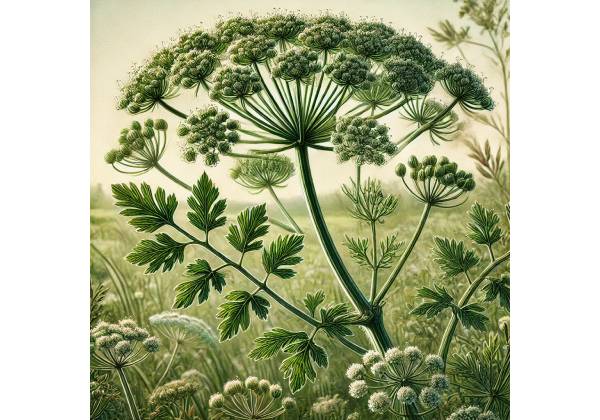Belkin Direct SLT Laser A Non-Invasive Solution to Manage Glaucoma
Glaucoma is a leading cause of irreversible blindness worldwide, affecting millions of individuals every year and placing an enormous burden on healthcare systems. Despite its prevalence, many people remain unaware that they have glaucoma until the disease has progressed to an advanced stage. This highlights the importance of early detection and effective treatment strategies. The Belkin Direct SLT Laser...
BDNF Eye Drops How Neuroprotection is Changing the Approach to Macular Degeneration
Macular degeneration is one of the foremost causes of vision impairment among older adults, with the potential to significantly affect quality of life and independence. Traditional treatment methods have concentrated on managing symptoms and slowing the disease’s progression, particularly in neovascular (wet) age-related macular degeneration (AMD), where medications targeting vascular endothelial growth factor (VEGF) are widely used. However, a...
Azasite Advanced Management of Bacterial Conjunctivitis with Azithromycin Ophthalmic Solution
Bacterial conjunctivitis is a common yet disruptive ocular infection that can interfere with daily life and overall well-being. When the delicate tissues of the eye’s outer membrane become inflamed due to bacterial invasion, the result can be irritating symptoms such as redness, discharge, and discomfort. Azasite, which is an azithromycin ophthalmic solution, has earned a notable place in contemporary...
Cayenne Pepper: Health-Boosting Properties, Historical Impact, and Practical Uses
Cayenne pepper is much more than a fiery spice that brings heat to your favorite dishes—it’s a versatile herb steeped in history and renowned for a wide range of potential health benefits. Derived from the fruit of the Capsicum annuum plant, cayenne pepper has been used for centuries not only in culinary traditions around the world but also in...
Cat’s Claw: Health Benefits, History, Medicinal Properties, and Practical Applications
Cat’s Claw is a fascinating vine native to the tropical rainforests of South America, particularly in Peru, Ecuador, and Brazil. Scientifically known as Uncaria tomentosa, this herb has been used for centuries in traditional medicine systems such as Amazonian and Andean healing practices. Its twisting, claw-like thorns and heart-shaped leaves give it a distinctive appearance, while its purported health...
Catmint: Health Benefits, Active Compounds, and Daily Applications
Catmint, often called Nepeta cataria (though the Nepeta genus features many species), is a fragrant herb recognized for its soothing gray-green leaves, gentle purple blossoms, and a well-known effect on certain feline friends. As part of the mint family (Lamiaceae), catmint stands out with its pleasant aroma and visually appealing, delicate flowers that attract bees, butterflies, and other pollinators....
Caterpillar Fungus: Health Benefits, Active Compounds, and Medicinal Applications
Caterpillar Fungus, often referred to by its scientific name Ophiocordyceps sinensis (formerly Cordyceps sinensis), has captivated health enthusiasts and researchers worldwide. This intriguing fungus is native to high-altitude regions of Tibet and surrounding areas, where it naturally grows by parasitizing the larvae of ghost moths. Its unique lifecycle—beginning as a spore infecting caterpillars, then transforming into a fungus that...
Cassia: Health Benefits, History, Properties, and Culinary Uses
Cassia, often referred to as Chinese cinnamon or Cinnamomum cassia, stands out as a warm, fragrant spice cherished in many global cuisines. It’s closely related to Ceylon cinnamon (Cinnamomum verum) yet has distinct features that make it a staple in traditional meals, baked goods, teas, and even certain medicinal preparations. Cassia is produced from the bark of evergreen trees...
Cassava: Complete Guide to Benefits, Properties, Culinary Uses, and Safety
Cassava, scientifically recognized as Manihot esculenta, is a root vegetable that holds a central role in the culinary and economic life of many tropical regions around the world. Sometimes referred to as yuca, manioc, or tapioca root, cassava is cultivated primarily for its starchy tuber, which can be transformed into a wide range of staple foods—from boiled roots and...
Cascara Sagrada: Known Benefits, Laxative Properties, and Proper Utilization
Cascara Sagrada is a distinctive herb derived from the bark of the Rhamnus purshiana tree, native to the Pacific Northwest region of North America. The name “Cascara Sagrada” translates to “sacred bark” in Spanish, reflecting its historical reverence in certain traditional medical systems. As a species of buckthorn, this tree yields an interesting combination of phytochemicals within its bark,...
Carrot: Complete Guide to Health Benefits, Active Compounds, Medicinal Properties, and Uses
Carrots hold a special place in many people’s diets and gardens, thanks to their delightful crunch, natural sweetness, and striking orange color. Botanically classified as Daucus carota (specifically Daucus carota subsp. sativus for cultivated varieties), carrots have deep historical roots and show up across global cuisines. They’re often among the first vegetables we’re introduced to, whether as babies nibbling...
Carqueja: History, Natural Uses, Key Properties, and Health Benefits
Carqueja, botanically known as Baccharis trimera or Baccharis genistelloides (depending on the region and classification), is a herb traditionally used across parts of South America, especially in Brazil, Argentina, and Paraguay. Its slender, branching stems have long served as an herbal resource for people seeking digestive support, natural wellness, and a distinctive flavor in teas or extracts. With its...
Carob: Benefits, History, Active Compounds, and Culinary Applications
Carob is a fascinating plant that often surprises people once they delve into its rich history, natural sweetness, and nutritional potential. Known botanically as Ceratonia siliqua, carob comes from the pods of the carob tree, an evergreen species native to the Mediterranean region. Although many folks associate carob as a stand-in for chocolate, this plant has its own unique...
Cardoon: Health Benefits, Active Compounds, and Culinary Applications
Cardoon is a tall, thistle-like herb that often captures attention with its striking silver-green leaves and bold, artichoke-like flower heads. While less common in modern American gardens, it has a long history in the Mediterranean region as both an ornamental plant and an essential ingredient in various traditional dishes. Botanically known as Cynara cardunculus, cardoon is a close relative...
Cardinal Flower: Ornamental Uses, Key Properties, and Cautionary Notes
Cardinal Flower, known scientifically as Lobelia cardinalis, is a stunning perennial herb prized for its bright red blooms and its role in attracting hummingbirds, butterflies, and a variety of pollinators. Native to wetland habitats in regions of North and Central America, this plant’s vibrant petals stand out in almost any garden setting. Beyond its ornamental value, Cardinal Flower has...
Cardamom: Culinary Applications, Properties, and Health Benefits
Cardamom is one of those timeless spices that manages to intrigue the senses and nurture the body all at once. Known for its vibrant flavor and distinct aroma, cardamom has found a place in everything from culinary creations to natural wellness practices. This small yet powerful spice often appears in sweet pastries, savory rice dishes, and fragrant teas, highlighting...
Caraway: Health Benefits, Active Compounds, and Culinary Applications
Caraway has charmed kitchens and natural wellness traditions for centuries, thanks to its distinctive flavor and a remarkable profile of beneficial compounds. These seeds, which come from the Carum carvi plant, add a warm, peppery note to bread, cheese, and various savory dishes. Beyond their culinary appeal, caraway seeds have long been valued for their potential to support digestion,...
Caper: Health Benefits, Active Compounds, and Culinary Applications
Caper is much more than a simple culinary delight—this remarkable plant has been cherished for centuries for its unique flavor, intriguing aroma, and wide range of health benefits. Whether you’ve enjoyed capers as a tangy addition to salads and sauces or have heard about their use in traditional remedies, you’re about to discover the many layers of this fascinating...
Avastin for Neovascular Age-Related Macular Degeneration: A Contemporary Option to Help Preserve Vision
Neovascular age-related macular degeneration (AMD), often referred to as “wet AMD,” is a progressive eye disease that can lead to significant vision loss if not properly managed. Over the years, various therapies have emerged to combat this sight-threatening condition, and Avastin—known by its generic name bevacizumab—has gained recognition as a notable option. While initially approved for certain forms of...
Autologous Serum Therapy for Neurotrophic Keratitis: Promoting Corneal Healing
Neurotrophic keratitis (NK) stands out as a challenging ocular surface disorder, marked by impaired corneal sensitivity and diminished wound-healing capacity. The condition can arise from various underlying etiologies—ranging from herpes simplex virus infections to surgical trauma and neurological diseases—each ultimately causing corneal nerve damage. Because a healthy cornea relies on functional innervation to stimulate tear production, cell renewal, and...
Autologous Serum Therapy: A Personalized Approach for Severe Dry Eye Management
Dry eye disease (DED) can be a debilitating condition, significantly reducing quality of life by causing chronic discomfort, fluctuating vision, and a constant reliance on lubricating drops. While many individuals find relief through artificial tears and lifestyle modifications, some patients suffer from persistent, severe forms of dry eye that demand more advanced therapeutic strategies. Autologous serum therapy has emerged...
Autologous Induced Pluripotent Stem Cells (iPSC) for Retinitis Pigmentosa: A Promising Vision Preservation Technique
Retinitis Pigmentosa (RP) is a challenging and often debilitating group of inherited retinal disorders that lead to progressive photoreceptor degeneration and eventual vision loss. For decades, ophthalmologists and researchers have sought interventions to slow, halt, or even reverse the damage caused by RP. While existing therapies such as nutritional supplementation, vitamin A, and electronic retinal implants have provided marginal...
Artificial Corneal Grafts for Severe Corneal Scarring: A Life-Changing Treatment
Severe corneal scarring can rob individuals of their most cherished sense—sight—by clouding or distorting the eye’s natural window. While conventional corneal transplantation from human donors has been a mainstay for treating advanced corneal disease, a significant subset of patients either cannot undergo standard transplants or face an unacceptably high risk of graft failure. Over the past few decades, artificial...
Argus II Retinal Prosthesis System: How Retinal Implants Are Enhancing Vision for Age-Related Macular Degeneration Patients
Age-Related Macular Degeneration (AMD) is a leading cause of irreversible vision loss, primarily affecting people over the age of 65. For decades, ophthalmology research has sought ways to address the visual handicap posed by advanced AMD, especially when the photoreceptors in the macula deteriorate to such an extent that standard treatments no longer help. In this context, retinal prostheses—sometimes...
Apellis’ APL-2 Injection: Advanced Complement System Modulation for Effective Dry Age-Related Macular Degeneration Management
Dry age-related macular degeneration (AMD) represents a significant and growing cause of visual impairment worldwide, with millions of individuals progressing from early stages of the disease to advanced atrophy that severely compromises central vision. Traditional remedies have primarily focused on risk reduction, nutritional support, and careful monitoring, leaving a large therapeutic gap for those who continue to experience progressive...
Apellis Pegcetacoplan: An Innovative Approach to Managing Geographic Atrophy in Age-Related Macular Degeneration
A Revolutionary Option for Geographic Atrophy: Apellis Pegcetacoplan at a Glance For individuals with advanced Age-Related Macular Degeneration (AMD), particularly the form known as geographic atrophy (GA), progressive and irreversible vision loss can significantly impact quality of life. While the “dry” form of AMD frequently progresses slowly over many years, the development of GA leads to the permanent loss of...
Anti-VEGF Eye Patches: Continuous Medication Release for Enhanced Wet Age-Related Macular Degeneration Treatment
A New Era in Macular Care: How Anti-VEGF Eye Patches Are Changing the Game Wet age-related macular degeneration (AMD) remains one of the leading causes of severe vision loss in older adults, particularly in developed countries. For years, the standard of care for wet AMD has centered on repeated intravitreal injections of anti-VEGF (vascular endothelial growth factor) medications. While effective,...
Amniotic Membrane Transplantation for Persistent Corneal Epithelial Defects: A Breakthrough in Ocular Healing
Persistent corneal epithelial defects (PEDs) can pose a significant challenge to both patients and clinicians, often leading to discomfort, reduced visual acuity, and a heightened risk of infection. Over the years, innovative solutions have emerged to address this concern, among which is Amniotic Membrane Transplantation (AMT). Backed by several clinical studies, AMT has shown notable promise, providing the potential...
Cape Jasmine: Benefits, Historical Significance, and Bioactive Properties
Cape Jasmine is a truly captivating herb that effortlessly combines natural beauty with remarkable health benefits. Whether you’ve encountered it in your garden, in a soothing cup of herbal tea, or in the delicate scent of your favorite perfume, Cape Jasmine has a way of leaving a lasting impression. Known for its pure white blooms and enchanting aroma, this...
Cape Aloe : Health Benefits, Active Compounds, Great Properties, and Uses
Cape aloe (Aloe ferox) is a succulent native to South Africa, prized for its towering stature and the potent gel within its leaves. Many people are more familiar with its close relative, the smaller and more commonly used aloe vera. Yet Aloe ferox stands out for its larger, thicker leaves and the robust concentration of active compounds in its...








































